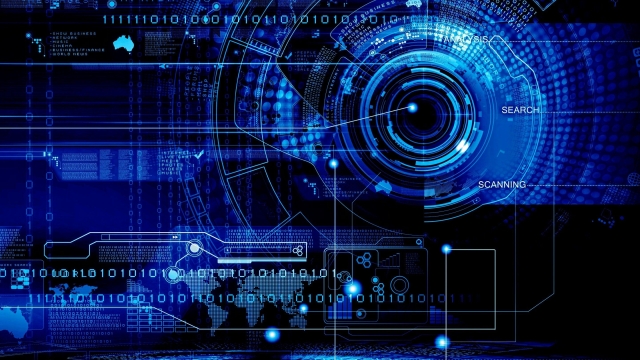
Deepfake technology has taken the world by storm, blurring the line between reality and illusion like never before. With its ability to seamlessly manipulate and superimpose human faces onto different bodies, deepfake technology has emerged as a powerful tool in the digital age. Far beyond mere photoshopping or editing, deepfakes have the potential to create incredibly realistic videos that can be indistinguishable from the real thing. This rapidly advancing technology raises important ethical and societal questions, as the line between truth and fiction becomes increasingly blurred.
One of the most concerning aspects of deepfake technology is its potential to deceive and mislead. With a few clicks and the use of sophisticated algorithms, anyone with access to this technology can create convincing videos that can compromise trust and misinform millions. From political scandals to false accusations, the rise of deepfake technology poses a significant threat to the integrity of information disseminated in the digital realm. As this technology becomes more accessible and user-friendly, the need for awareness and effective countermeasures become all the more urgent.
However, deepfake technology is not solely a tool for deception. It has also become an artistic medium, allowing creators to imagine and explore new realms of expression. From movie special effects to creative storytelling, deepfakes have opened up a world of possibilities in visual media. Yet, as we navigate this uncharted territory, it is crucial to strike a balance between artistic expression and potential harm. Legislation and ethical guidelines must be in place to ensure that this technology is used responsibly and for the greater good.
The rise of deepfake technology has undoubtedly ushered in a new era of digital innovation, yet it raises complex questions that require careful consideration. As we unmask these digital doppelgängers, we must grapple with issues of trust, privacy, and accountability. Only through a comprehensive understanding of the technology and its implications can we navigate this evolving landscape and harness the potential of deepfakes, while safeguarding the integrity of our digital world.
Understanding Deepfake Technology
Deepfake technology refers to the groundbreaking advancement in the field of artificial intelligence that enables the creation of highly realistic and convincing fake videos, images, and audio recordings. This emerging technology combines deep learning algorithms, computer vision, and advanced image processing techniques to manipulate and alter digital content. By employing sophisticated machine learning models, deepfake technology can seamlessly superimpose one person’s face onto another person’s body, creating a digital doppelgänger that appears to be genuine and authentic.
The rise of deepfake technology has sparked both awe and concern. On one hand, it showcases the remarkable progress being made in AI research and the immense potential for creative applications. Deepfakes have been used in various forms of entertainment and digital art, allowing creators to explore alternate realities and push the boundaries of imagination. However, the malicious use of deepfake technology raises significant ethical and societal challenges.
One of the main concerns surrounding deepfake technology is its potential for misuse and deception. With the ability to manipulate digital content with such precision, malicious actors could generate misleading or even fake news, spreading misinformation on a massive scale. Deepfakes can be used to defame individuals, manipulate elections, or perpetrate fraud, leading to serious consequences for individuals and society as a whole.
Despite its potential dangers, deepfake technology holds promise for positive applications as well. It can be a valuable tool for visual effects in the film industry, enabling actors to seamlessly portray characters that would otherwise be impractical or impossible. Moreover, deepfake technology can be used for educational purposes, allowing students to interact with historical figures or experience simulated scenarios that enhance their learning experience.
As deepfake technology continues to evolve, it is crucial to strike a balance between innovation and responsible use. The development of robust detection methods and ethical guidelines is essential to minimize the harmful impact of deepfakes and preserve trust in digital media. Public awareness and education are vital to ensure that individuals can discern between genuine content and manipulated deepfakes, enabling them to make informed decisions and navigate the increasingly complex digital landscape.
Implications of Deepfake Technology
Deepfake technology has far-reaching implications across various sectors, ranging from personal privacy to national security. With its capability to manipulate and fabricate realistic videos and images, deepfake technology has the potential to greatly impact society in numerous ways.
The rise of deepfake technology poses a significant threat to privacy and trust. As these digital doppelgängers become increasingly indistinguishable from real footage, individuals could find themselves targeted by malicious actors who create convincing fake videos for personal gain or to damage reputations. This could lead to severe consequences for individuals, including reputational harm, loss of job opportunities, and even legal issues.
https://faceswap.akool.com/
Furthermore, the implications of deepfake technology extend beyond personal privacy, impacting the political landscape and public discourse. Deepfake videos can be used to spread misinformation and manipulate public opinions during elections or important events. The ability to fabricate realistic videos of public figures saying or doing things they never did raises concerns about the erosion of trust in media and the potential for widespread societal discord.
Finally, deepfake technology also poses significant challenges for law enforcement and national security agencies. The use of deepfakes in cybercrime, fraud, and espionage can have serious implications for the safety and security of nations. It becomes increasingly difficult to verify the authenticity of videos and images, making it harder to investigate and prosecute criminal activities.
In conclusion, the implications of deepfake technology are vast and complex. From privacy concerns to political manipulation, and challenges in law enforcement, the rise of deepfake technology forces society to grapple with the need for increased awareness, regulation, and technological countermeasures to mitigate its potential risks.
Combating Deepfake Threats
- Raising Awareness and Educating the Public
One crucial step in combating the growing threats posed by deepfake technology is to raise awareness and educate the public. By increasing knowledge and understanding of how deepfakes are created and their potential implications, individuals can better protect themselves from falling victim to misinformation or malicious intent. Educational campaigns can be launched to explain the risks associated with deepfakes, enabling people to critically evaluate the authenticity of digital content they come across.
- Developing Advanced Detection Tools
To effectively address the challenges posed by deepfakes, it is essential to develop advanced detection tools. These tools could utilize machine learning algorithms and artificial intelligence to identify and flag potential deepfake content. By continuously improving the accuracy and speed of detection, these technologies can help mitigate the potential harm caused by deepfake videos and images. Additionally, collaborative efforts between tech companies, researchers, and policymakers can accelerate the development of such tools and promote their widespread availability.
- Strengthening Legal Frameworks and Regulation
Another important aspect of combating deepfake threats lies in strengthening legal frameworks and regulation. As deepfakes become increasingly sophisticated, it is crucial for governments to enact laws and regulations specifically targeting the creation, distribution, and malicious use of deepfake content. These measures can serve as a deterrent to potential offenders and provide victims with legal recourse. Additionally, international cooperation and coordination are vital to address cross-border concerns and ensure a unified approach to tackling deepfake-related issues.
In conclusion, the rise of deepfake technology presents significant challenges that demand proactive action. By raising awareness, developing advanced detection tools, and strengthening legal frameworks and regulation, we can work towards mitigating the threats posed by deepfakes. Collaboration between technology experts, policymakers, and the public is essential to ensure a safer and more secure digital landscape.
